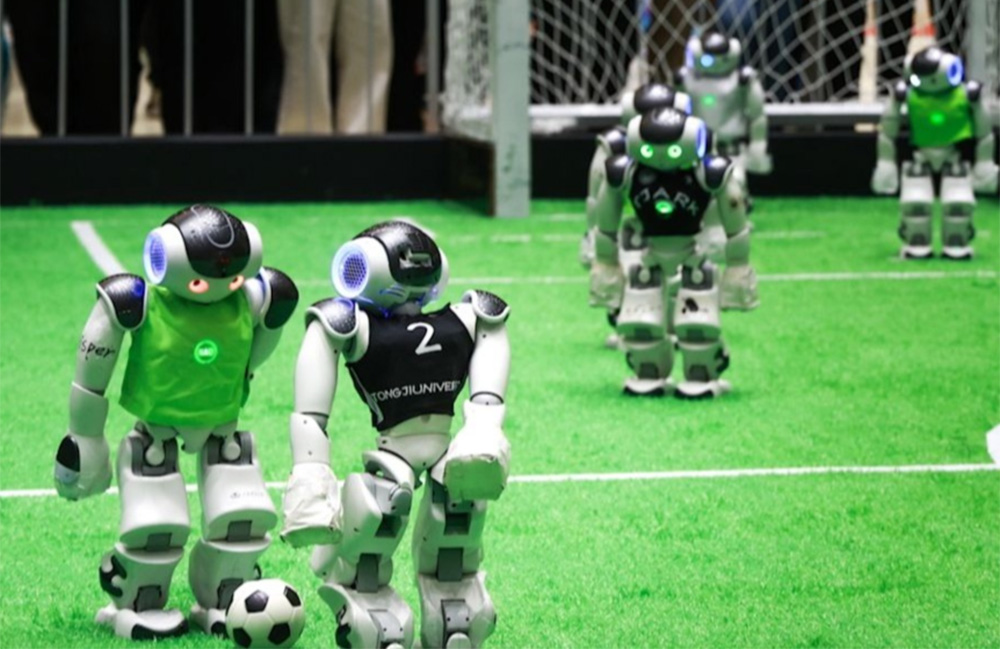
Aldebaran’s Nao robots took part in the annual RoboCup soccer tournaments. | Source: Aldebaran
Maxvision Technology Corp. this week acquired the core assets of Aldebaran, a French developer of humanoid and semi-humanoid robots that reportedly filed for bankruptcy in mid-February. The transaction includes key technological assets and intellectual property rights related to Aldebaran’s flagship robots, Nao and Pepper.
Founded in 2005, Paris-based Aldebaran focused on the design, development, production, and commercialization of humanoid robots. The company served a wide range of sectors, including education, scientific research, healthcare, and retail.
Aldebaran designed its bipedal Nao and wheeled Pepper to be non-threatening. The robots are shorter than adults and are designed with curved white surfaces. Nao, Aldebaran’s first system, replaced Honda’s Asimo in the annual RoboCup soccer tournaments.
The company released the first version of Pepper in 2014. The company said it had sold about 20,000 Nao robots and 17,000 Pepper humanoids to 70 countries, but it stopped producing Pepper in 2020 or 2021. In June, a judicial panel put Aldebaran in receivership.
Maxvision said the acquisition will enable it to make significant strides in its strategic roadmap. The Shenzhen, China-based company added that it expects the new assets and IP to strengthen its technological capabilities in AI-driven robotics, accelerate the development of its humanoid robot portfolio, and support its efforts to expand globally.
How will Maxvision use the Aldebaran assets?
Maxvision said it plans to incorporate Aldebaran’s technologies in high-precision motion control and emotional interaction to enhance its R&D capabilities in advanced robotics.
The Aldebaran assets will also expand Maxvision’s existing robot portfolio to include humanoids. The company said this will allow it to support deployment in high-potential sectors, including border security, education, cultural and creative applications, healthcare, eldercare, emergency response, and commercial services.
In addition, Maxvision said it hopes to use Aldebaran’s established brand reputation and channel network across Europe and North America to accelerate the global rollout of its intelligent systems. The company also said Aldebaran’s technology will help it deploy robots in more complex environments.
Maxvision prioritizes preserving Aldebaran’s legacy
To preserve Aldebaran’s legacy and ensure continuity of its brand and technology roadmap, Maxvision will establish a subsidiary in France, which will serve as its local R&D and customer service hub. The original teams, product lines, and client support operations will remain in place, and Maxvision said it will invest in Aldebaran’s development—particularly in education and healthcare applications—while fostering local innovation.
At the same time, Maxvision asserted that its strengths in intelligent manufacturing and supply chain integration in China will help it enhance production efficiency and cost competitiveness.
Building on its presence in airports, seaports, ports, and traffic, Maxvision said it will deliver intelligent robotic solutions to a broader range of global markets and industries.
